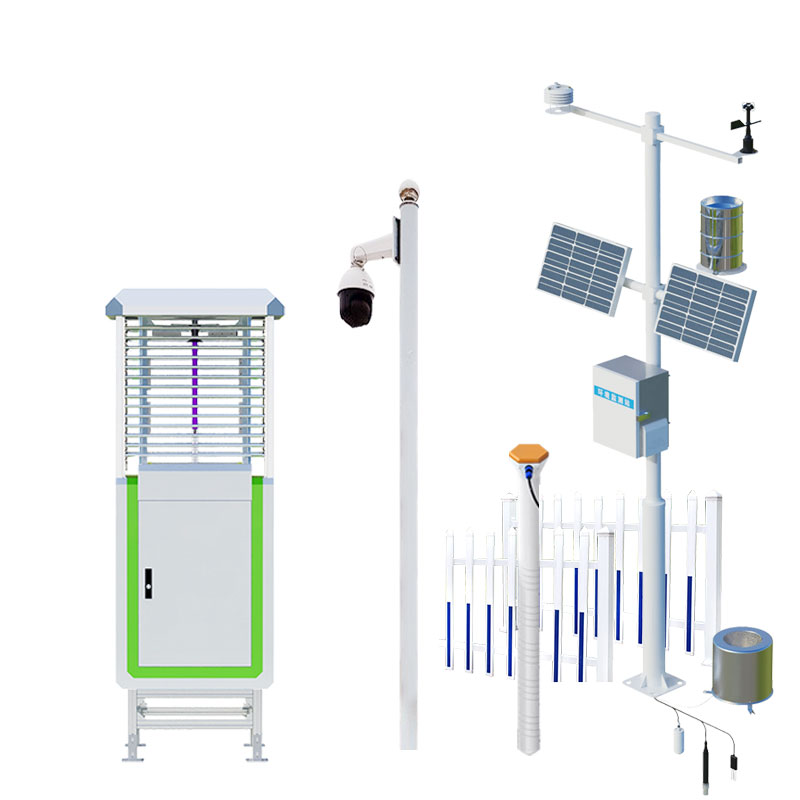Tianqiong Sensor IOT Technology Co., Ltd
Sales Manager:Ms. Emily Wang
Cel,Whatsapp,Wechat:+86 15898932201
Email:info@fengtutec.com
Add:No. 155 Optoelectronic Industry Accelerator, Gaoxin District, Weifang, Shandong, China

Sales Manager:Ms. Emily Wang
Cel,Whatsapp,Wechat:+86 15898932201
Email:info@fengtutec.com
Add:No. 155 Optoelectronic Industry Accelerator, Gaoxin District, Weifang, Shandong, China

Model:FT-Q1
Brand:tianqiong
1.Agricultural monitoring system background
Agricultural Monitoring System provides real-time data on soil moisture, temperature and humidity to monitor crop health, predict risks and optimize resources.Agricultural monitoring system is also known as the agricultural four-information monitoring device, abbreviated as the agricultural and forestry four-information monitoring system.The Agricultural monitoring system is based on advanced wireless sensors, Internet of Things, cloud platforms, big data and the Internet and other information technologies.It is a meteorological multi-factor observation device based on the Internet of Things.With the development of smart agriculture, technologies such as the Internet, big data, and artificial intelligence have gradually been applied to all aspects of agricultural production, greatly improving the allocation and utilization efficiency of various production factor resources such as labor and capital.
With the help of the Internet of Things, smart agriculture has built an agricultural production system integrating environmental monitoring and precise adjustment.It can monitor and supervise different agricultural production environments and objects, detect the physical parameters of the environment through sensing equipment, and conduct real-time dynamic monitoring of production environment conditions such as soil, insect conditions, meteorology, seedling conditions, etc., so that it complies with agricultural production environment standards.The application of these new technologies will greatly improve the quality of agricultural products, make them meet market demand, and achieve effective connection between supply and demand, and promote the refined, efficient and modern development of agricultural production.
2.Composition of the Agricultural monitoring system
The system consists of a tube-type soil moisture monitoring instrument, insect detection lamp, weather station, video surveillance, fence, and cloud platform.
The system can systematically monitor and manage the soil temperature, soil moisture, pest and disease conditions (pest types, pest numbers, etc.), climate conditions (air temperature, humidity, rainfall, illuminance, carbon dioxide, wind speed, wind direction and other environmental parameters), and crop growth.The data is uploaded to the measurement and reporting platform through GPRS/4G or network port.Managers can remotely view the data and trends of various environmental parameters in real time, save manpower, and make corresponding adjustments based on data feedback to ensure the good growth trend of crops and assist agricultural production.
3.Introduction to the Agricultural monitoring system platform
1.The four agricultural situation monitoring platform is an online monitoring platform integrating insect conditions, meteorological conditions, soil moisture conditions and seedling conditions monitoring.The insect situation monitoring has functions such as automatic identification of Al pests, remote real-time viewing of insect situations, online analysis of insect situations, automatic identification of insect types, regional insect situation statistics, insect situation change trend analysis, equipment monitoring and other functions.Meteorological monitoring has the function of remote real-time viewing of meteorological conditions and online analyzing of meteorological historical data.The moisture monitoring has the function of remotely obtaining soil moisture (such as soil temperature and humidity, moisture, PH) data and analyzing soil moisture historical data online.Seedling condition monitoring can view the growth picture of crops in real time.
2.Monitor the home page to display the device list, large-screen visualization, map display and other menu information.Displays the soil moisture, insect conditions, meteorological monitoring icons and the operating status of the equipment.
3.Pest condition monitoring includes five parts: real-time insect condition, insect condition analysis, pest species, real-time status, and operation records.
4.Insect situation analysis: You can query pictures within the selected time range.
5.Insect situation statistics include regional statistics and trend analysis.
Area analysis: Select the area, and after selecting the time, click Query to query the number of pests in the insect device in the selected time period.Trend analysis: Select the area, select the time and click query to query the curve changes in the number of pests in the area.
6.Meteorological monitoring includes two parts: real-time data and historical data.
7.Soil moisture monitoring includes two parts: real-time data and historical data.
8.System management includes four parts: device management, user management, area management, and system log.
Within the meteorological observation system, meteorological stations encompass various types such as National Climate Observatories, National Reference Climate Stations, National Basic Meteorological Stations, National Meteorological Observation Stations, and Regional Automatic Meteorological Stati...
In modern traffic management, real-time and accurate road condition monitoring is of great significance for ensuring driving safety and improving road operation efficiency. Traditional road weather stations typically require embedded installation, which not only damages the road structure but may al...
In scenarios such as ventilation and air conditioning systems and industrial pipeline exhaust, the air velocity in the air duct is an important parameter for measuring the operating status of the system. When the air velocity is too high, it may lead to increased energy consumption, greater pipeline...
Rainfall is one of the important water cycle links in nature. Accurate measurement of rainfall is of great significance for agricultural irrigation, urban flood control, water resource management, meteorological research and other fields, as it provides key data support for decision-making in these...